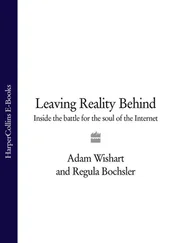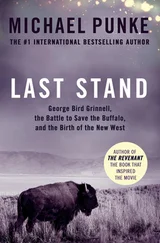“I understand that.”
I asked him if Barclays’s board and its CEO, John Varley, were in agreement with him about a possible Lehman deal. British boards, I knew from experience, played a more active role in takeovers than did their counterparts in the U.S.
“They are,” Bob said. “This is obviously a major undertaking.”
I suggested that he talk further with Varley and his board, while I touched base with Tim Geithner, whom I immediately updated.
“Diamond is clearly interested,” I said. “Barclays doesn’t have much of a history of completing acquisitions, but I think we should move ahead here pretty aggressively.”
We needed to act fast—and not just for Lehman’s sake. Market worries were spilling over to other institutions. Shares of Washington Mutual, the troubled Seattle mortgage lender, were being battered. Tim and I agreed that, for the industry to be part of the solution, we needed to get all of Wall Street together quickly. I suggested that we set the meeting for Friday night, because we needed a deal by Sunday night. John Thain called later that morning to tell me that Merrill’s stock was off significantly and its credit spreads were widening. He volunteered to participate in an industry solution for Lehman, and I told him that we planned to get a group together in New York over the weekend.
I stepped away from Lehman long enough to place more than 20 calls to members of Congress, briefing them on the GSEs and problems in the financial markets. They generally supported our action on the GSEs, but they gave me an earful about bailouts and—as Chris Dodd had done the previous day—warned me that they didn’t want to see taxpayer money put into Lehman.
I touched base again with Bob Diamond, who confirmed that Barclays was serious and that Varley wanted to talk directly to me. He noted that Barclays’s board was keen not to be embarrassed, as they would be if word leaked out that they were an interested bidder and someone else did the deal.
“We’re looking for an exclusive,” I remember him saying. “If we get one, we can move very quickly.”
“We can’t give you an exclusive, and I don’t believe Lehman Brothers can, either,” I replied. Barclays hadn’t asked for assistance in doing a deal, and because I assumed Ken Lewis would, I knew this would give the British bank a leg up. “I believe that if you move quickly, the odds are very high that you will be successful. I can assure you that the Fed and I will work together to make this happen.”
I emphasized that because the government couldn’t put money into the transaction, Barclays should focus on Lehman’s troubled assets so we could discuss realistically how they could get a deal done. I recommended that he call Dick Fuld right away and arrange to get together.
Ken Lewis called a little after 5:00 p.m. He said that the capital issue had been more or less settled with the Fed; Ben Bernanke had assured him that the Fed would try to resolve the problem. But that was the extent of any good news.
“We took a hard look at Lehman Brothers, and there are a number of assets we’re uncomfortable with,” he said. “I’m sorry to tell you we won’t be able to do this deal.”
I wouldn’t let him off the hook. “If you had help with the bad assets, would you be willing to proceed?”
“You said there would be no government money,” he pointed out. “Have you changed your position?”
“No, we haven’t. But I expect that if you made an acceptable offer, we could get others in the industry to help finance the part that you weren’t going to take. It would be just like the LTCM consortium.”
Lewis had watched the Fed assist JPMorgan in acquiring Bear Stearns, so it was only natural that he would try to get whatever help he could—from the government or the private sector. He agreed to put together a proposal and get back to me, and I said I would approach Wall Street firms to work something out. I told him we needed a deal finalized by Sunday, so I wanted his preliminary thoughts by Friday night.
Reports that buyers were circling Lehman helped prop up the market. The Dow had ended the day up nearly 165 points, at 11,434. Even WaMu gained, closing at a dismal $2.83, up from $2.32 the previous day, but its CDS had blown out to a breathtaking 2,838 basis points from 2,267. Lehman did not benefit from the market rally: its shares fell 42 percent, to $4.22. Merrill’s shares dropped almost 17 percent, to $19.43, their lowest level in nearly a decade.
That night my team got on a conference call with the New York Fed, the Washington Fed, and the SEC. There must have been between 30 and 40 people on the line, all with one concern: getting Lehman to the weekend.
Tim took us through a quick review of the unsettled market. One New York Fed staffer noted that Lehman’s funding was increasingly problematic. JPMorgan had renewed a week-old $5 billion collateral call that day. It felt like Bear Stearns all over again, with a critical difference: There were much bigger concerns about the losses in Lehman’s balance sheet. Many were worried that all the bad news coming out would lead banks to begin to pull their funding. Lehman borrowed $230 billion overnight in the repo market—an extraordinary reliance on short-term funding that could be pulled at a moment’s notice. Lehman could easily become the victim of a run triggered by a widespread loss of confidence. Chris Cox said that the SEC staff was making contingency plans for a Lehman bankruptcy.
I reminded the group that we had two potential buyers for Lehman. Bank of America was further along, but there was a significant amount of assets they were unwilling to take.
“I’ve heard from Lewis, and he wants to pass on this if there is no help, but I believe he’ll come back with a proposal,” I said. I added that Barclays seemed more interested in Lehman.
Then, realizing that I was speaking to a large group, I again emphasized that there would be no public assistance for a Lehman bailout and that we would be looking to the private sector to help the buyer complete the acquisition. My team at Treasury believed that we needed to publicly stress these two points, to prepare the industry for the likelihood it would have to help us. The New York Fed would be inviting Wall Street CEOs to a meeting, and we didn’t want them to arrive thinking that we would be there waving a government checkbook. Even if by Sunday we had to resort to a government rescue, we needed on Friday to put as much pressure as possible on the private sector to help out.
On Thursday evening, Michele Davis told reporters off the record that there would be no government money for Lehman, hoping that our stance would become clear in Friday’s papers. Michele wanted to lay the groundwork for what we all hoped would be a deal that would see Lehman bought that weekend.
Friday, September 12, 2008
I arrived at the office at 7:00 a.m., suitcase in hand, prepared to spend the weekend in New York. We had to get through one more trading day until then, and it was shaping up to be a brutal one. Lehman’s credit spreads remained wide, while Merrill Lynch, WaMu, and AIG also were getting hammered.
Looking at the papers that morning, I realized that our communications strategy hadn’t worked out as planned. Although a front-page story by David Cho, Heather Landy, and Neil Irwin in the Washington Post said, “The government is looking for an agreement that would not involve public money,” I knew that few people on Wall Street paid attention to the Washington paper. Their more likely news sources, the New York Times and the Wall Street Journal , left the door open. So Michele quickly went to CNBC to reiterate that there would be no public money. At 9:15 a.m. CNBC’s Steve Liesman reported that, according to a person familiar with my thinking, “there will be no government money in the resolution of this situation.”
Читать дальше












